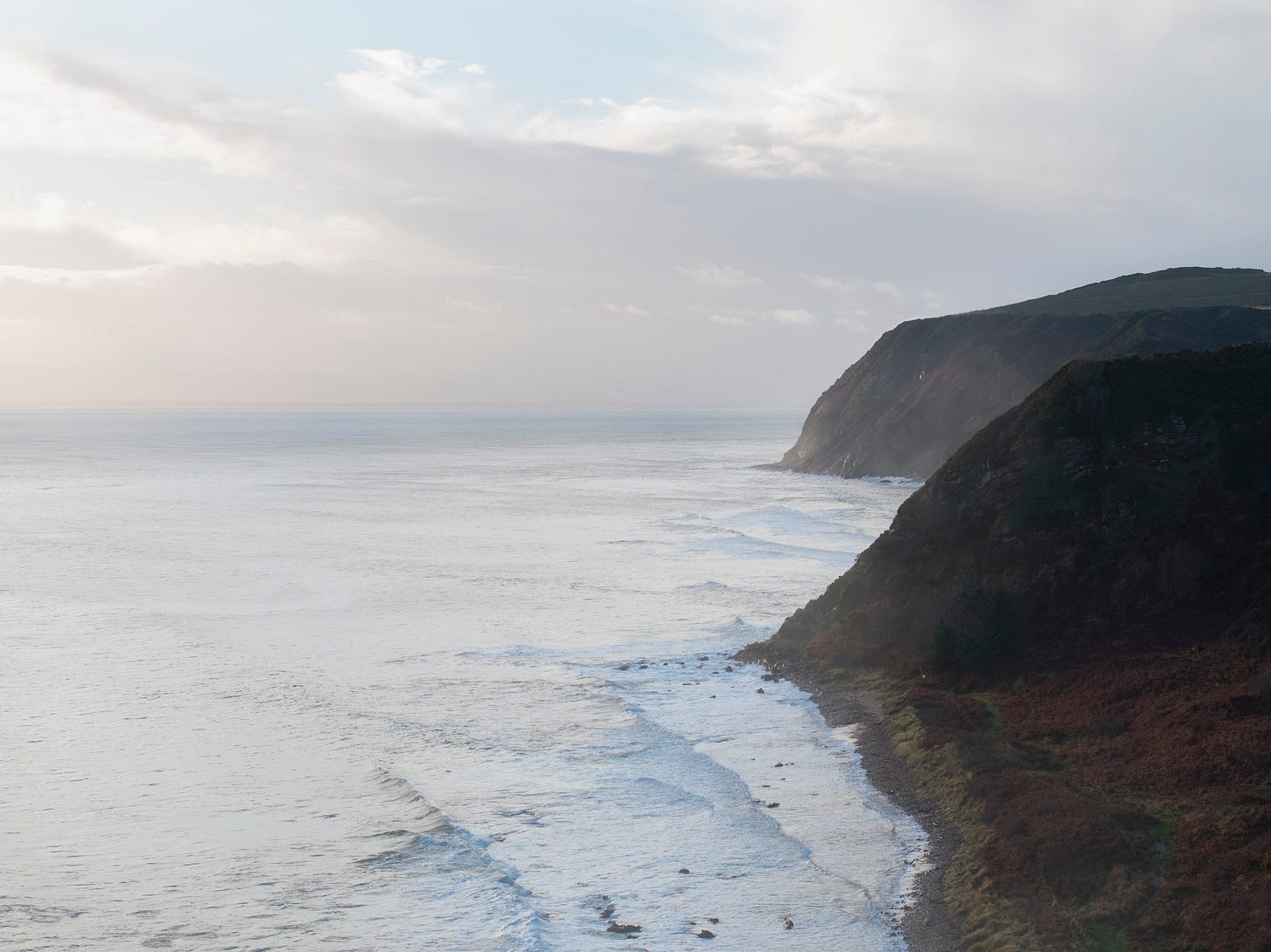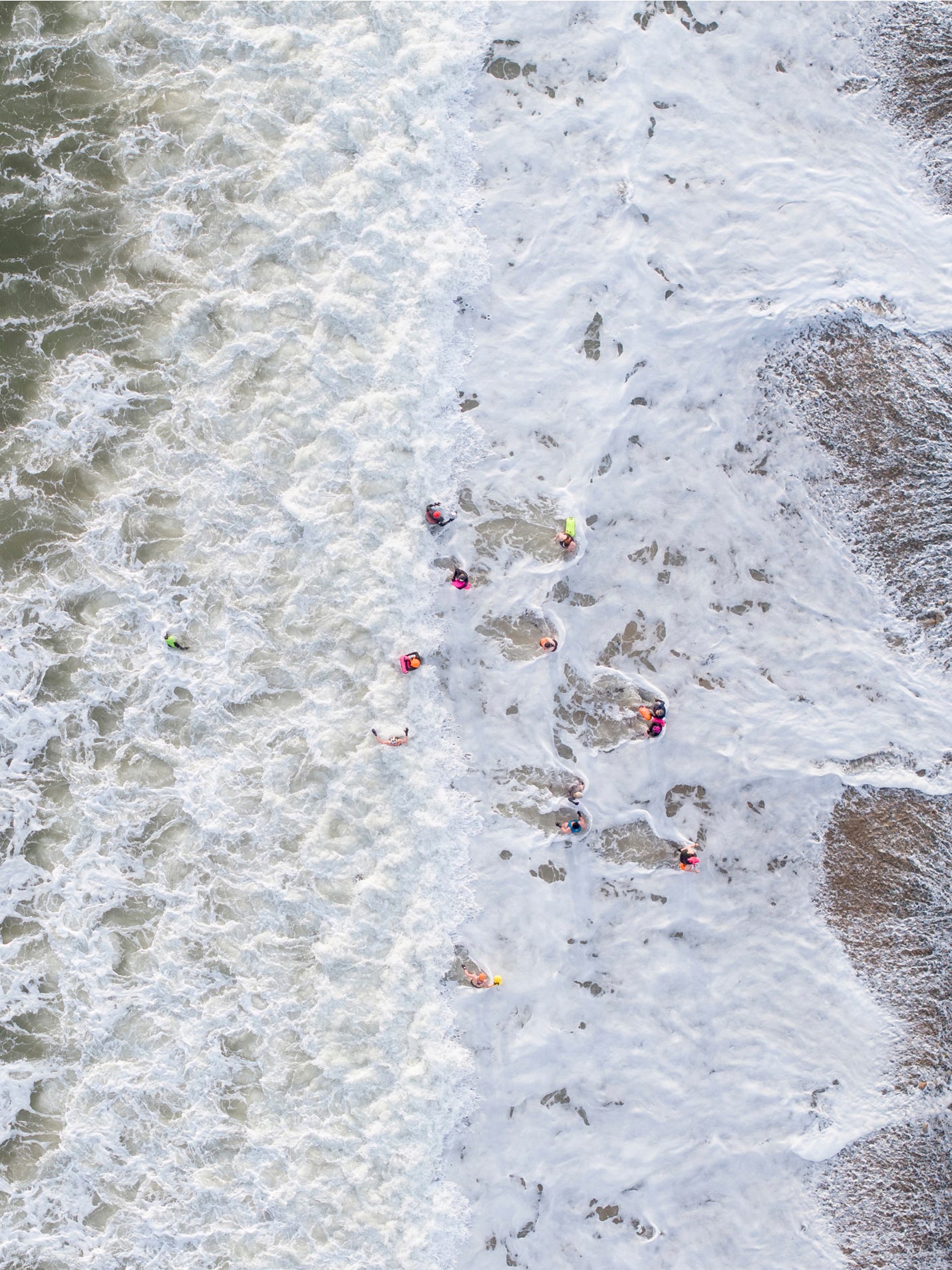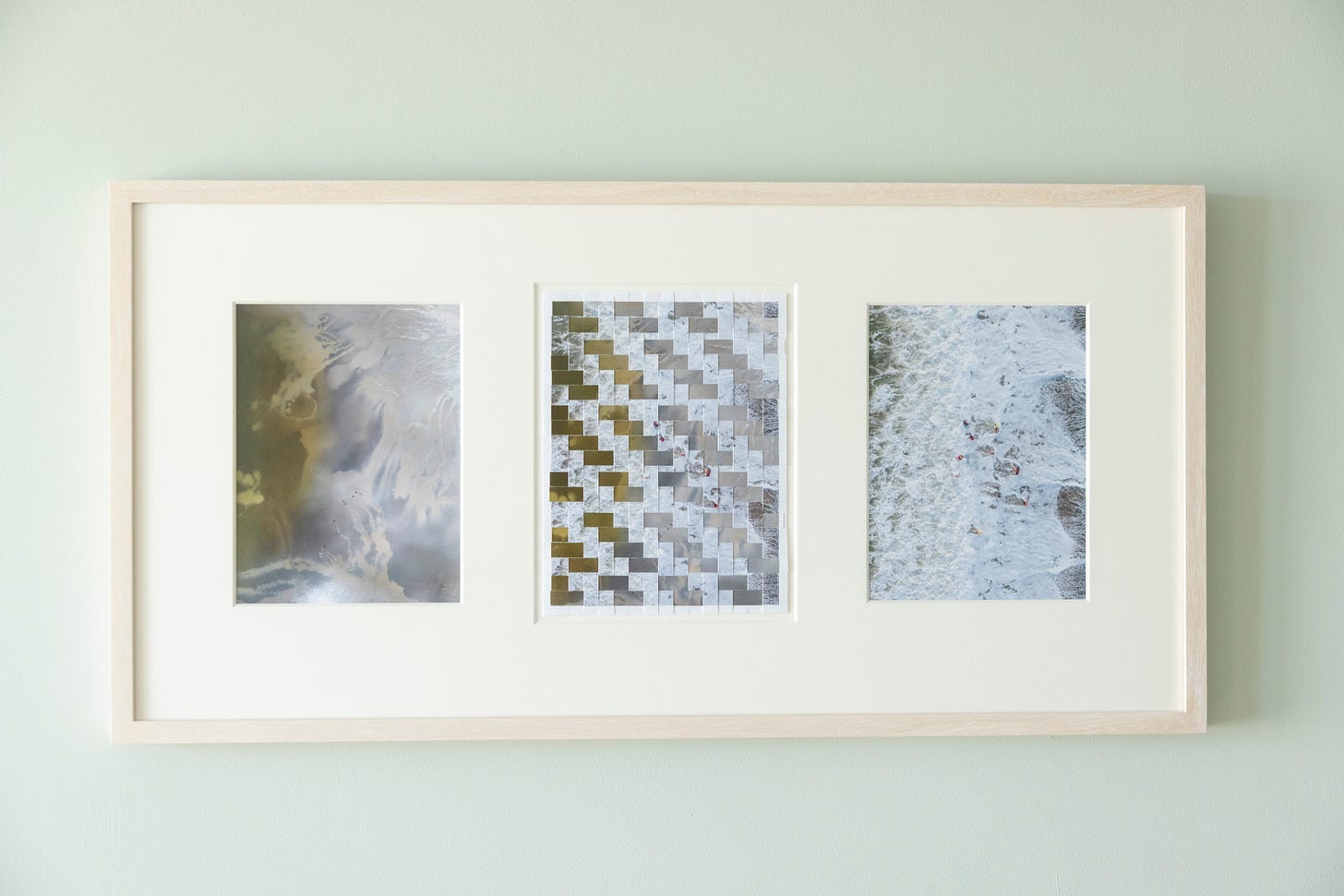6. Recreate
Of Fishwives and Bathers
Fabricated Land is an ongoing body of work composed of photoweaves of abstract aerial imagery. Each weave tells hidden stories of the past’s influence on the present. A new triptych awaits at the end of this post. This is the last from the series for while but you can catch up on the others here: 1. Cataclysm, 2. Empire, 3. Resistance, 4. Power and 5. Romance.
If you think fishermen are tough, consider how much tougher were the women who carried them to their boats.
The Easter Ross village of Balintore in northeast Scotland once supported an industry to feed herrings to hungry Londoners, the gannets of the south. Today, a mermaid sits bolted upright to a boulder, keeping watch over endless sets of waves being thrown forward by Arctic winds. There are no statues to the fishwives, but an information board mentions that they kept their husbands’ feet dry by carrying them into the fishing yawls or ‘rippers’.
The three Seaboard Villages hug the coast like a tightly coiled rope, taking up as little of the laird’s land as possible. To the uninitiated there is no clear division between the villages. Hilton becomes Balintore which blends into Shandwick. But the locals know. While visiting church, I ask a woman if she is from Hilton, where the modern Free Church hall sits. “No, no,” she laughs, as if I had suggested she was from Atlantis. “Balintore,” she informs me, a few doors away.
Psalms drown the crashing waves, rising and falling to fill the hall in metrical sets.
Who stills the roaring of the seas, the roaring of their waves, the tumult of the peoples
Psalm 65:7
Your wrath lies heavy upon me, and you overwhelm me with all your waves
Psalm 88:7
Mightier than the thunders of many waters, mightier than the waves of the sea, the Lord on high is mighty
Psalm 93:4
The precentor calls and gathers the voices together: reminding me of waulking songs, when women sat in circles turning coarse wool into something softer to weave into tweed cloth. The Sunday Sabbath songs had a different focus, this was a time to recreate, to rest from toil and waves and waulking.
After the service, I stare in awe at the foaming surf. Cars arrive. Women jump out, a pod of neoprened and bare-limbed selkie queens, majestic dry robes flowing around them, a latex flamingo crowning a head. They shriek with delight as cold water overwhelms them. The rolling boil is a place of recreation, for pleasure, for awe.
This is the final swim of the year for one woman who has immersed herself in the sea every day, through drizzle, squall or tempest. The water triggers a flood of feel-good chemicals to the bloodstream, a warming glow, and the social gathering is equally as uplifting.
I love this photograph. It’s wild and invigorating. We differ from our forebears, but we share the sense of awe and the necessity of kinship. Thank God we have wetsuits and goggles and jobs in cosy offices. And harbours. Thank God for safe harbours to retreat to when the storm is raging, and those who gather around us to protect us through life’s trials.
And I love the fact that these women remain as hardy as their predecessors. And that, like my wife, they can endure frigid winter waters. I can’t. I am a man. I need to be carried to my boat.
A Commissioned Triptych
What began as experimentation has become a framed work. My first weave with the swimmers combined them with a quarry separating sand for whisky bottles. Both sites, one Highland and the other Lowland, are industrial landscapes, the foreshore is actually post industrial now the fishing fleet has moved on.
The broken twill weave resembles the sets of waves reshaping the shore, or the mechanised removal of quarry walls. The colour resonance of the brown beach with the iron rich waters of the quarry lagoon works visually, for me. In both, humans have recreated the landscape.
After my initial experiments, I was commissioned by an individual collector to create a framed triptych including both source images and the study weave. I love this new form and I will do more. If you are interested in this please get in touch. Each framed print comes with the stories behind the prints.
Fife, Easter Ross (Waves), 2025







Love seeing prints of the originals framing the weave! Very cool presentation
It took me a while to realise that the middle image of the triptych was a ‘digital’ weave. It reveals the contrast in colours in the quarry image, which otherwise isn’t so apparent.
I was in the Seaboard Villages a month ago and photographed the Mermaid of the North at sunrise (and had a swim): https://open.substack.com/pub/felicitymartin/p/exploring-the-harsh-heritage-of-scotlands?r=dsete&utm_medium=ios